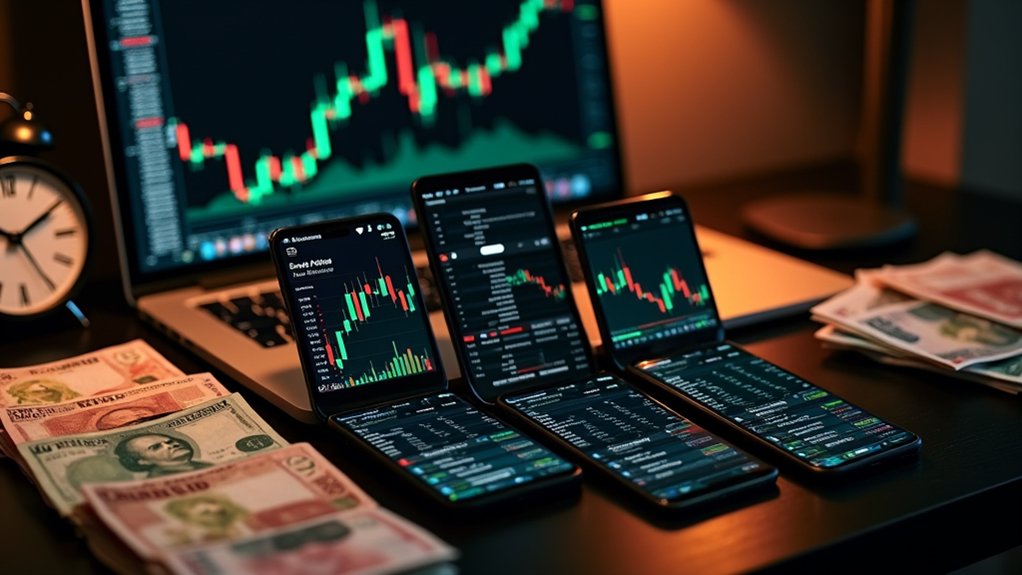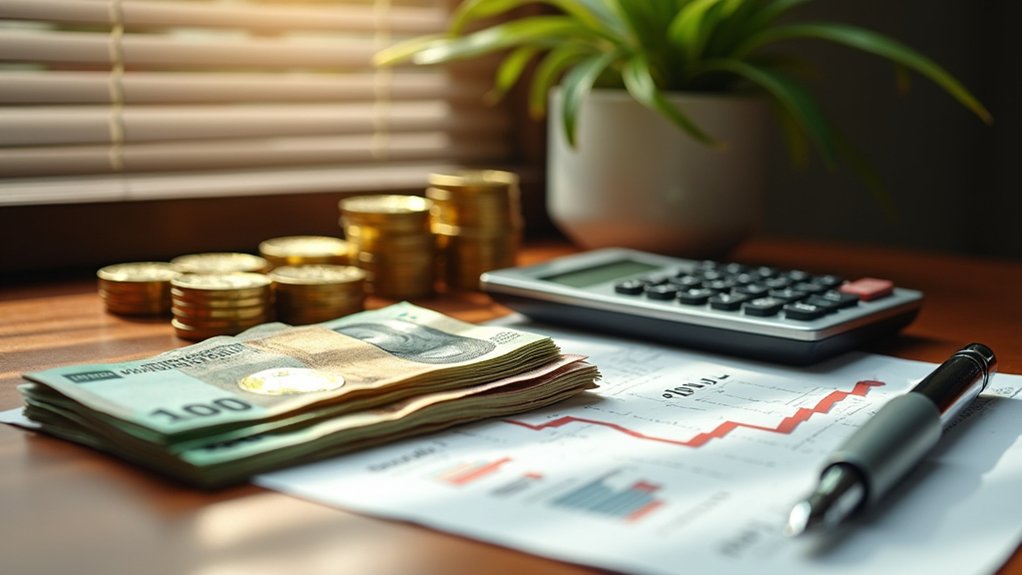Leverage and margin are two sides of the same coin in forex trading. Leverage is borrowed money that amplifies both trading power and risk—think 100:1 or 400:1 ratios that let small accounts control massive positions. Margin is the deposit brokers require to keep those positions open, calculated as one divided by the leverage ratio. Higher leverage means less capital locked up per trade but also means small losses can obliterate accounts fast. The math is straightforward, but the consequences hit different when real money evaporates.

Across Africa, from Lagos to Nairobi to Johannesburg, forex traders encounter leverage and margin before they understand what either term actually means. Brokers throw around ratios like 400:1 or 100:1 as if they're selling features. They are, sort of. But what they're really offering is borrowed money to amplify your trading power. That's leverage. Simple as that.
Leverage isn't a feature brokers are selling—it's borrowed money that amplifies both your trading power and your risk.
Here's the thing nobody explains clearly: leverage and margin are the same concept viewed from opposite sides. Leverage tells you how much market exposure you control. Margin tells you how much of your own money you need to put down to control it. When a South African trader opens a position worth $100,000 using only $1,000 of actual capital, that's 100:1 leverage. The $1,000? That's the margin requirement. The good faith deposit the broker holds while the trade stays open.
The math is straightforward. Margin requirement equals one divided by leverage, multiplied by 100%. So 400:1 leverage means a 0.25% margin requirement. Want to trade a mini lot of USD/CAD worth $10,000 with that ratio? You need $25 margin. That's it. With 50:1 leverage, common across many African brokers, you'd need 2% margin, which equals $200 for that same position.
Egyptian traders, Kenyan traders, Nigerian traders, they all see these ratios differently depending on local regulations and broker access. But the mechanics don't change. Higher leverage means lower margin requirements. Lower leverage means more capital locked up per trade. A 20:1 ratio requires 5% margin. A 200:1 ratio drops that to 0.50%.
The appeal is obvious. Capital goes further. A Ghanaian trader with $500 can control positions worth $50,000 at 100:1 leverage. Multiple trades become possible simultaneously. Small price movements suddenly matter because position sizes are larger. Most trading platforms automatically display margin requirements for each trade before execution, removing the guesswork from position planning.
But here's where it gets uncomfortable. That same amplification works both ways. A 20-pip move on GBP/USD generates $200 whether the position is leveraged or not. The difference is how much of your account that $200 represents. Lose $200 on a $10,000 unleveraged position? Annoying. Lose $200 on a $500 account running high leverage? Devastating.
Leverage amplifies profits and losses equally. No exceptions. Moroccan traders, Tanzanian traders, Zambian traders, they all face the same reality. The double-edged sword cuts just as deep going down as it does going up. Margin functions as a deposit requirement that brokers hold to open leveraged positions in the foreign exchange market. Different brokers offer varying account features that determine available leverage ratios and margin requirements. Brokers love promoting the upside. They're quieter about accounts wiped clean because someone treated 400:1 leverage like free money instead of borrowed risk. Understanding how to control larger positions with smaller capital amounts means accepting the full weight of potential losses alongside potential gains. Beginners should prioritize free educational resources before risking capital on leveraged positions they don't fully comprehend.
Common Questions
Can Nigerian Banks Block My Broker Deposits Due to Leverage Trading?
Nigerian banks won't block deposits just because a trader uses leverage. The CBN regulates payment channels, not trading activities or leverage ratios. Banks process broker deposits through local transfers, cards, and fintech partners without issue—unless there's suspicion of money laundering or the platform is flagged as illegal.
High-profile restrictions have hit crypto hard, but direct blocks on forex broker deposits? Not common. The real risk isn't the bank; it's picking a scam broker that locks accounts.
Does High Leverage Affect Withdrawal Times to African Mobile Money Accounts?
No, high leverage doesn't slow withdrawals to African mobile money accounts.
Withdrawal speed depends on broker processing times, KYC verification status, and mobile money provider clearance—not the leverage traders use.
Some brokers might apply extra checks on high-leverage accounts for regulatory reasons, but there's no industry-wide pattern linking leverage to payout delays.
The real bottlenecks? Incomplete verification documents, unsupported payment methods, and local mobile network processing times.
Leverage affects trading risk, not how fast money leaves the platform.
Are Margin Call Policies Different for Traders in CEMAC or ECOWAS Regions?
Margin call policies aren't dictated by CEMAC or ECOWAS membership—brokers set their own rules regardless of region. What *does* matter? BEAC's restrictive foreign exchange regulations in CEMAC countries make funding accounts and moving money harder, which could delay deposit top-ups when margin calls hit.
ECOWAS traders face fewer currency restrictions. But the margin call percentage itself—whether 50% or 80%—comes from the broker's terms, not regional monetary unions. Different headache, same painful outcome.
Can I Lose More Than My Deposit With South African Regulated Brokers?
Yes. South African retail traders can lose more than their deposit with FSCA-regulated brokers. Why? No mandatory negative balance protection exists under FSCA rules. Leverage can reach 1:500 at some brokers, amplifying risk fast. During extreme volatility or price gaps, accounts can go negative—and traders may owe the broker money.
Some brokers offer negative balance protection voluntarily, but it's not universal. Check your broker's client agreement carefully. The risk is real.
Do Kenyan Brokers Offer Lower Leverage Than Offshore Brokers Allow Locally?
Yes, Kenyan brokers offer markedly lower leverage than many offshore brokers targeting local traders. CMA-regulated firms cap retail leverage at 1:400, sometimes less.
Offshore brokers? They dangle 1:1000, 1:2000, even unlimited leverage like candy. It's tempting but risky—no CMA oversight, no fund protection, no recourse when things go south.
Kenyan regulations exist to limit catastrophic losses. Offshore operators couldn't care less about local rules. Lower leverage isn't exciting, but it's deliberate protection.










